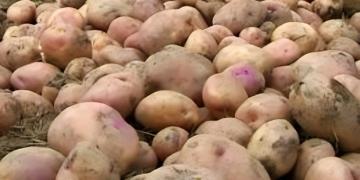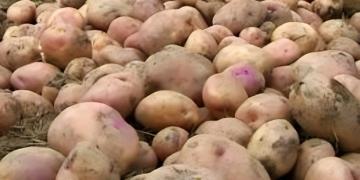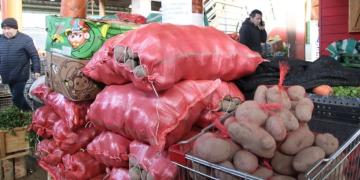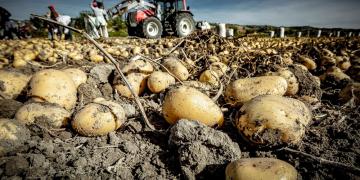Argentina: In Mendoza, some producers give away potatoes because they cannot cover the costs.
Potatoes are one of the most consumed vegetables in Argentines’ dishes, and they are going through one of their worst periods. Current prices don’t cover production costs, leading many to reconsider planting them again.

In Valle de Uco, according to data provided by the Rural Society to El Cuco Digital, there are a total of 9,961 hectares of cultivated vegetables (garlic, tomatoes, oregano, and potatoes).
Regarding potato cultivation, there are a total of 6,000 hectares under cultivation in the province of Mendoza, of which approximately 2,000 are planted in the southern part of San Carlos. Large-scale plantings are also underway in Malargüe and El Sosneado.
In our country, potato cultivation is primarily carried out in the southeast of the province of Buenos Aires (Tandil, Balcarce, General Alvarado, and Lobería), where the largest cultivated area in the country is located (55%). This region is followed by the Córdoba-San Luis region (30%) and Tucumán (10%). Mendoza accounts for 5% of the country’s total.
At the national and provincial levels, 70% of potato production is destined for the domestic market, meaning markets or local grocery stores. A further 25% is sold to businesses as frozen (pre-fried) potatoes. The remaining 5% is used as seed.
This year in particular, increases in diesel, fertilizer, and land preparation prices drove up costs, which meant that in many cases, when it came time to sell, the numbers were high and consumers didn’t buy.
Due to the high cost, several parts of the country began purchasing potatoes from Brazil, Paraguay, Chile, and Uruguay. Production was then distributed to various markets, eventually reaching grocery stores and supermarkets. Specifically, due to this import situation, many national and provincial producers were unable to sell their produce, and those who did sell did so at very low prices, which didn’t allow them to cover their expenses.
Price per bag in Valle de Uco
From El Cuco Digital, we went out to consult with some producers in San Carlos and Tunuyán about the situation of the product and what is currently being done.
"Every year I plant potatoes, but this year I’m left with several bags. I can’t sell them, and what they’re offering isn’t good enough for me. I’m storing them and giving some bags to friends," said a producer from San Carlos.
Another producer said: “I haven’t sold anything, I bag them and go out to sell them on the street. I started asking for $6,000, but since no one was buying, I lowered my price to $4,500, but the sales are very low.”
Fuente:




